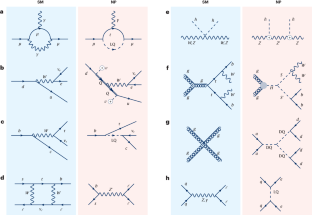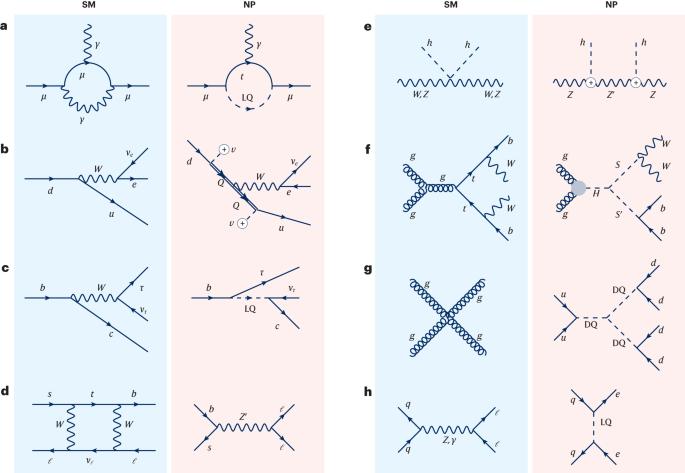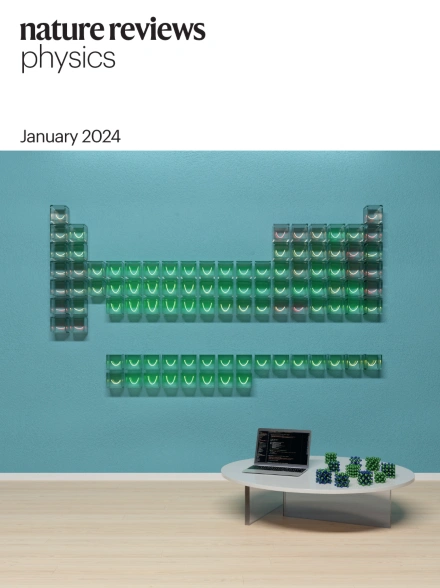Anomalies in particle physics and their implications for physics beyond the standard model
IF 44.8
1区 物理与天体物理
Q1 PHYSICS, APPLIED
引用次数: 0
Abstract
The standard model (SM) of particle physics is the mathematical description of the fundamental constituents and interactions of matter. Its last missing particle, the Higgs boson, was observed in 2012. However, there are several phenomena that the SM cannot account for (such as dark-matter particles, or non-vanishing neutrino masses), neither does it describe gravity. There must be more to discover, to extend the SM into a full description of nature. Here we review the hints of new physics, called anomalies, that are seen for various interactions as discrepancies between standard-model predictions and experimental measurements. We consider both direct high-energy searches for new particles at the Large Hadron Collider at CERN and indirect low-energy precision experiments. These anomalies span an energy scale of more than four orders of magnitude: from the mass of the proton, to the electroweak scale (approximately the mass of the Higgs boson), to the teraelectronvolt scale, which is the highest scale directly accessible at the Large Hadron Collider. We discuss the experimental and theoretical status of various anomalies and summarize possible explanations in terms of new particles and new interactions as well as discovery prospects. We suggest, in particular, that new additional Higgs bosons and so-called leptoquarks are promising candidates for extending the standard model. The standard model of particle physics describes the fundamental constituents of matter and their interactions. We review the status of experimental hints for new physics, which, if confirmed, would require the extension of the standard model with new particles and new interactions.


粒子物理学中的反常现象及其对标准模型之外物理学的影响
粒子物理学标准模型(SM)是对物质基本成分和相互作用的数学描述。2012年,人们观测到了标准模型最后一个缺失的粒子--希格斯玻色子。然而,标准模型无法解释一些现象(如暗物质粒子或不等的中微子质量),也无法描述引力。要将SM扩展为对自然的全面描述,肯定还有更多的发现。在这里,我们回顾了新物理学的蛛丝马迹,这些蛛丝马迹被称为 "反常现象"(anomalies),在各种相互作用中被视为标准模型预测与实验测量之间的差异。我们既考虑了在欧洲核子研究中心大型强子对撞机上对新粒子的直接高能搜索,也考虑了间接的低能精密实验。这些反常现象跨越了四个数量级以上的能量尺度:从质子质量到电弱尺度(大约是希格斯玻色子的质量),再到太电子伏特尺度,这是在大型强子对撞机上可以直接获得的最高尺度。我们讨论了各种反常现象的实验和理论状况,总结了新粒子和新相互作用的可能解释以及发现前景。我们特别提出,新的附加希格斯玻色子和所谓的轻夸克是扩展标准模型的有希望的候选粒子。
本文章由计算机程序翻译,如有差异,请以英文原文为准。
求助全文
约1分钟内获得全文
求助全文
来源期刊

Nature Reviews Physics
Multiple-
CiteScore
47.80
自引率
0.50%
发文量
122
期刊介绍:
Nature Reviews Physics is an online-only reviews journal, part of the Nature Reviews portfolio of journals. It publishes high-quality technical reference, review, and commentary articles in all areas of fundamental and applied physics. The journal offers a range of content types, including Reviews, Perspectives, Roadmaps, Technical Reviews, Expert Recommendations, Comments, Editorials, Research Highlights, Features, and News & Views, which cover significant advances in the field and topical issues. Nature Reviews Physics is published monthly from January 2019 and does not have external, academic editors. Instead, all editorial decisions are made by a dedicated team of full-time professional editors.
 求助内容:
求助内容: 应助结果提醒方式:
应助结果提醒方式:


